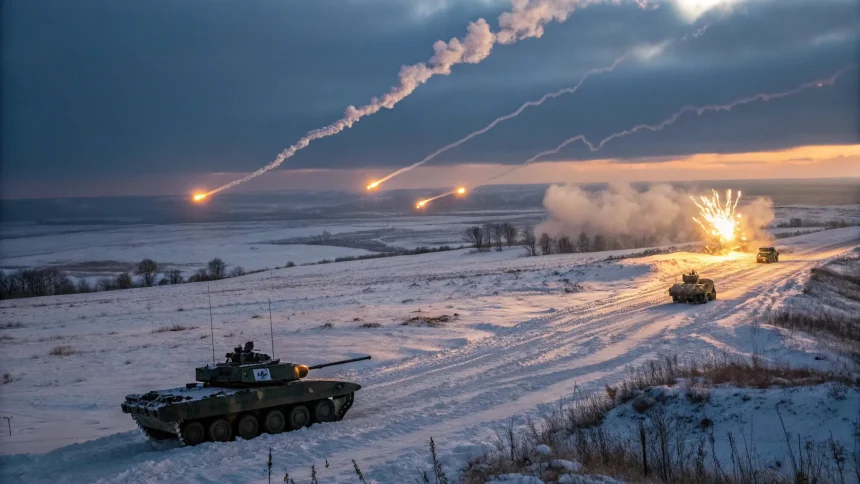Ukraine has conducted another significant long-range attack deep inside Russian territory, continuing its strategy of targeting key military and energy infrastructure beyond the immediate border regions. This latest strike represents an ongoing shift in Ukraine’s military approach as the conflict enters a new phase.
The attack follows a pattern of increasingly bold Ukrainian operations aimed at disrupting Russia’s military capabilities and energy resources, which are critical to sustaining its war effort. While specific details about the target and damage assessment remain limited, the strike appears consistent with Ukraine’s recent military doctrine.
Strategic Shift in Ukrainian Operations
Over recent months, Ukraine has gradually expanded its campaign of deep strikes into Russian territory, moving beyond defensive operations along the frontlines. These attacks have primarily focused on two categories of high-value targets: military installations and energy facilities.
Military analysts note that by targeting energy infrastructure, Ukraine aims to disrupt Russia’s industrial capacity and logistics networks that support its military operations. Similarly, strikes against military facilities seek to degrade Russia’s ability to launch attacks and sustain forces near the Ukrainian border.
The Ukrainian military has increasingly demonstrated its capability to conduct precision strikes at significant distances, despite Russia’s extensive air defense systems. This capability represents a substantial evolution in Ukraine’s military posture since the beginning of the conflict.
Russian Response and Security Implications
Russia has consistently condemned these attacks as escalatory and has responded with its own strikes against Ukrainian cities and infrastructure. The Russian defense ministry has claimed to have intercepted some Ukrainian weapons before they reached their targets, though independent verification of these claims remains difficult.
Security experts point out that these deep strikes create a complex security situation, forcing Russia to divert air defense resources to protect facilities far from the Ukrainian border. This redistribution potentially weakens Russia’s defensive capabilities along the actual front lines.
The attacks have also prompted increased security measures around key Russian infrastructure sites, with some energy facilities implementing enhanced protection protocols and contingency plans.
International Reactions
The international community has offered mixed responses to Ukraine’s deep-strike strategy. Western allies have generally supported Ukraine’s right to target military infrastructure that directly contributes to Russia’s war effort, while expressing more caution about strikes against purely civilian targets.
Some military observers suggest these operations demonstrate Ukraine’s determination to bring the costs of the war back to Russian territory rather than simply absorbing attacks on its own soil. The psychological impact of these strikes on Russian public opinion may be as significant as their military value.
As both sides continue to adjust their strategies, the conflict appears to be entering a new phase characterized by longer-range operations and an expanded battlefield that increasingly includes Russian territory beyond the border regions.
The latest attack underscores Ukraine’s continued ability to penetrate Russian airspace despite Moscow’s efforts to strengthen its air defenses. Whether this will lead to a fundamental shift in the war’s dynamics or prompt new diplomatic initiatives remains to be seen as the conflict continues to evolve.









